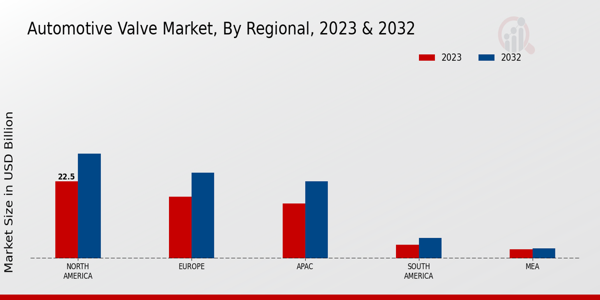Recent developments in the Automotive Valve Market indicate significant activity surrounding key players such as Mitsubishi Electric, Parker Hannifin, and Valeo. Innovations in electric vehicle technology and the push for improved fuel efficiency are driving demand for advanced valve systems.
Denso and Continental are actively investing in RD to enhance their product offerings, focusing on smart valve technologies that optimize engine performance. Additionally, robust market growth is evidenced by rising valuations in companies like Delphi Technologies and Robert Bosch as they expand their portfolios to include more high-tech solutions.
Mergers and acquisitions have notably shaped this landscape, with Thyssenkrupp acquiring a technology firm to bolster its capabilities in automotive valves, while Aisin Seiki has engaged in a strategic partnership to enhance its product design and manufacturing processes.
Recent transactions underscore a growing emphasis on integration and collaboration, aiming to meet the evolving needs of the automotive industry. The market's trajectory is further supported by strategic alignments among BorgWarner and Eaton, reinforcing their positions to leverage opportunities in the rapidly changing automotive sector. Overall, the focus remains on innovation, strategic growth, and value creation in the automotive valve landscape.
August 2024
Bosch's Advanced Valve Technology – Bosch's New Range of Engine Valves. Bosch unveiled a new range of engine valves that have been developed to improve the efficiency of internal combustion engines as well as emission levels. These valves utilize lightweight and engineered elements to refine the engine's functionality.
July 2024
Denso's Development of Components For Electric Vehicles: Denso has once again moved forward by announcing the inclusion of valves for thermal management systems of electric vehicles (EV) in their product line. These are critical in controlling the battery temperature and EV performance and safety.
June 2024
Eaton Strategy to Broaden Its Portfolio: Eaton's business strategy is to expand its automotive portfolio globally. This means that if a company like Eaton has vertical integration in the automotive industry, developing its automotive portfolio means they are gaining market share.
May 2024
Schaeffler's Emmanuel Valves for Hybrid Cars: Schaeffler exhibited its fresh electromechanical valves specially designed for hybrid cars. These valves are an appropriate method of controlling engine airflow, which leads to better fuel efficiency and fewer emissions from hybrid powertrains.
April 2024
Delphi Technologies' collaboration with a top automotive company – Delphi Technologies, has partnered with one of the top automotive manufacturing firms to work on designing the following sets of fuel injection valves.
November 2023
Bosch Introduces Lightweight Engine Valve Technology: In an effort to achieve stricter global emission norms, Bosch has launched new lightweight engine valves.
October 2023
Development of Smart E-Valves for Cooling Systems: Mahle has launched new smart electromechanical valves for electric vehicle cooling systems. The software-enabled integration ensures the correct battery temperature control in real-time, maximizing vehicle range as more accurate battery temperature means less energy is wasted.
Continental AG: Collaboration with Stellantis reported a contract with Stellantis for next-generation exhaust gas recirculation (EGR) valves for new hybrid range emission control systems.





















